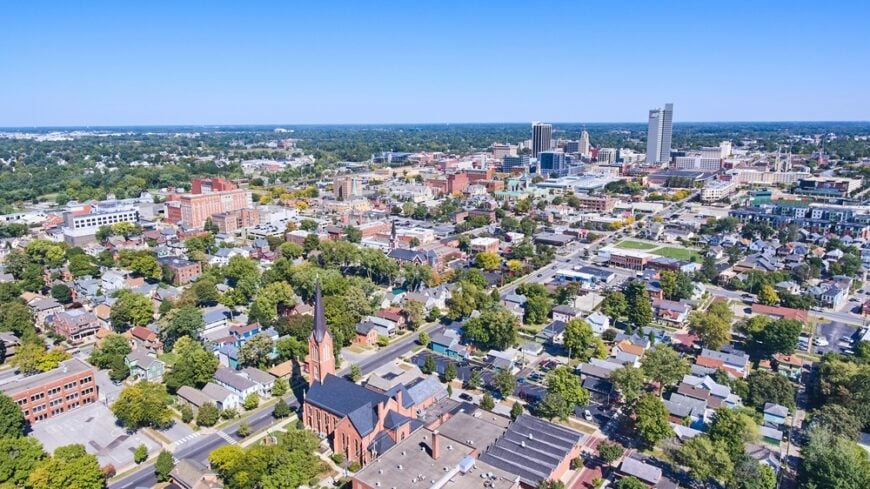
I’ve spent the better part of a decade tracing the route of the old Wabash & Erie Canal through northern Indiana, and I’m still surprised by how many towns carry quiet reminders of this once-mighty waterway.
Some communities wear their canal past proudly with museums and replica boats; others hide their history in overgrown towpaths and stone lock ruins that only reveal themselves if you know where to look.
What binds them all together is a feeling that time flows more slowly along the old canal bed, making each stop an inviting detour for history lovers, cyclists, and anyone who enjoys exploring Indiana off the interstate.
From tiny hamlets that barely appear on modern maps to bustling cities that owe their early growth to canal commerce, these fifteen places offer a deep dive into the state’s most fascinating transportation story.
I’ve counted them down from fifteen to one so you can watch the canal’s tale build toward the towns that, in my opinion, celebrate it best. Lace up your walking shoes, grab a field notebook, and join me on a journey where every bend in the river seems to whisper, “The canal was here first.”
15. Lockport

Lockport is one of those blink-and-you’ll miss it crossroads in Carroll County, yet it safeguards the masonry of Lock No. 33—an original stone lock chamber that still stands beside the old towpath.
I love parking near the tiny white church, then walking a short stretch to find interpretive signs that explain how canal boats would queue here before dropping into the next level of the Wabash River valley.
Bird-watchers gather in early spring because the wet canal prism forms a natural corridor for migrating warblers, making the ruins feel unexpectedly alive. If you visit in October, bring a flashlight for the popular evening “Lantern Tours,” where local volunteers dress in 1850s garb and recount tales of packet-boat drama.
For such a small place, Lockport delivers an outsized sense of discovery that rewards anyone willing to slow down and wander. The average price for a 3-4 bedroom home in Lockport ranges from $240,000 to $261,000, offering options for those seeking a historic setting near the old canal locks.
Where is Lockport?
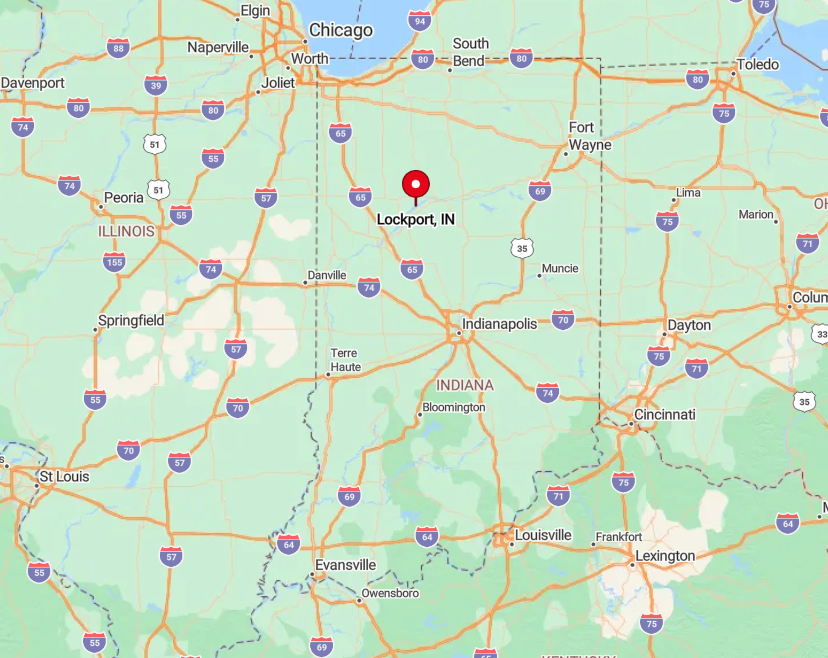
The hamlet sits four miles east of Delphi along Towpath Road, tucked between IN-25 and the Wabash River. Its low bluff gives you a clear view of both the river and the excavated canal basin, showing just how closely the two ran side by side.
You’ll need a car; I usually exit I-65 at Lafayette, then follow US-421 north and county roads west—plan on thirty quiet minutes of farmland scenery. GPS tends to drop signal in the ravines, so download an offline map before you leave larger towns.
14. Andrews

Formerly known as Antioch Station, Andrews grew up around a canal wharf that shipped timber and salt pork long before railroads reached the area. The original warehouse foundation now anchors Riverside Park, where I like to picnic beneath cottonwoods while imagining packet boats sliding past.
Each June, the town hosts “Canal Days,” a modest but charming festival featuring mule-drawn wagon rides along the filled-in towpath and a living-history blacksmith who forges iron rings identical to the ones that once guided tow ropes. The Kissing Bridge, a covered span rebuilt on canal footings, offers a perfect photo op at sunset.
Though small, Andrews packs a surprising amount of hands-on history into a single square mile, especially for families who enjoy interactive exhibits. For those interested in settling in Andrews, 3-4 bedroom homes are priced between $225,000 and $675,000, providing a range of choices for different budgets.
Where is Andrews?

You’ll find Andrews in Huntington County, about five miles southwest of the city of Huntington and just north of the Wabash River’s meander. The former canal right-of-way parallels Main Street, making it easy to picture boats where cars now park.
Reaching Andrews is simplest via US-24; I exit at IN-105 and drive two minutes south into town. Amtrak doesn’t run here, so plan on a leisurely road trip and keep an eye out for the brown “Canal Heritage” sign at the edge of the village.
13. New Haven

On the eastern fringe of Fort Wayne, New Haven once thrived as a weigh-station where canal officials assessed tolls on every barrel of flour and keg of whiskey floating toward Toledo.
Today that legacy lives on at Canal Landing Park, where a scaled-down guard lock has been reconstructed so kids can flood and drain a mini-chamber with hand cranks.
I always stop at Rack & Helen’s for lunch; their second-floor dining room overlooks the old basin and offers historical photos that reveal just how busy the waterfront used to be.
Cyclists love connecting the park to the River greenway trail system, effectively pedaling the same route mules once trod. A local gem most travelers overlook is the Hoagland Granary mural, which depicts a nineteenth-century canal scene on the side of an active feed store, blending past and present in one stroke.
3-4 bedroom homes in New Haven typically cost between $265,000 and $380,000, making it an attractive option for families seeking a blend of history and modern conveniences.
Where is New Haven?

New Haven sits in Allen County, immediately east of I-469 and five minutes from downtown Fort Wayne. The Maumee River and the former canal prism run parallel through town, making this one of the easiest places to visualize their historic link.
Access is straightforward via US-30 or US-24, both of which merge into local streets flashing “Fort Wayne Trail” markers. If you’re flying, Fort Wayne International Airport is just twenty minutes away, and ride-shares happily shuttle visitors to the canal park.
12. Attica
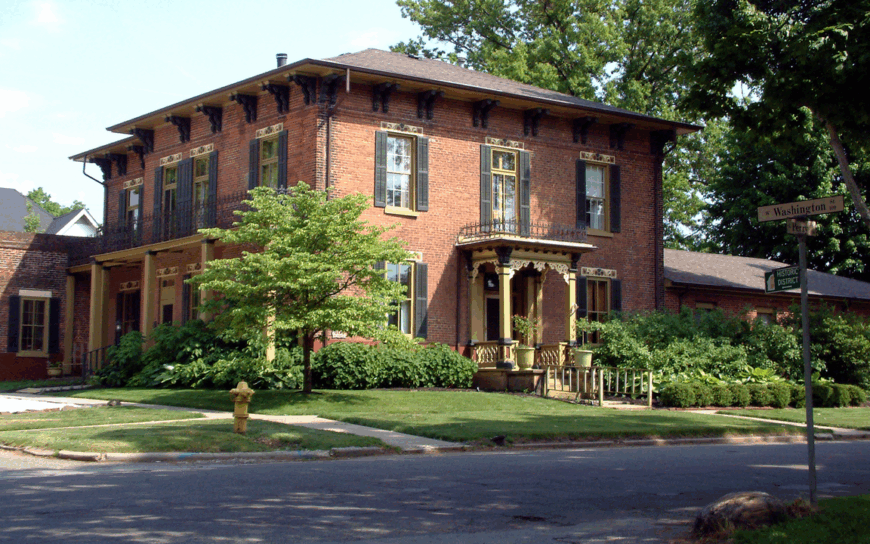
Attica’s limestone bluff overlooking the Wabash convinced engineers in 1846 to blast a deep cut for the canal, and evidence of their handiwork still scars the hillside behind downtown.
I enjoy strolling Market Street, where brick Italianate storefronts reveal subtle canal-era features like carriage arches wide enough to admit freight wagons headed for the wharf.
The town’s pride and joy is Ravine Park, a natural gorge that includes a short interpretive trail showing where canal water once cascaded through lock gates before rejoining the river.
Antique hunters shouldn’t miss Cottrell Village just south of town, where I’ve found blue-and-white canal scrip dating from 1854 tucked in a cigar box for five bucks. Attica feels like a living outdoor museum, with every alley hinting at the sweat and ingenuity that powered Indiana’s “Grand Canal.”
The price range for 3-4 bedroom homes in Attica is between $140,000 and $290,000, providing an affordable opportunity to live in a town rich with canal history.
Where is Attica?

Located in Fountain County, Attica lies forty miles northwest of Lafayette on the south bank of the Wabash River. The old canal prism parallels Mill Street, then disappears beneath modern IN-28 as it heads west.
Drivers usually reach town via US-41; I prefer the slower IN-55 route, which follows the river valley and offers striking cliff views. Greyhound stops in nearby Crawfordsville, but you’ll want a car to tackle the last twenty scenic miles.
11. Covington

Covington once marketed itself as the “Port of the Grand Prairie,” luring canal investors who built a spacious turning basin now repurposed as a lush municipal golf course water hazard.
The town square features a handsome courthouse whose limestone blocks arrived by canal barge. On summer Fridays, a small farmers market sells honey harvested from hives kept right along the towpath.
I’m fond of the Steel Span Footbridge, a rare pedestrian crossing erected atop the original wooden aqueduct pilings; at dusk, it frames postcard-worthy reflections in the Wabash.
If you like quirky stops, head to Beef House Roll Bakery—its signature yeast rolls are said to trace back to a canal cook’s recipe, and they’re good enough that I usually stuff a dozen in my cooler for the drive home.
3-4 bedroom homes in Covington are priced between $120,000 and $300,000, making it a great choice for those looking for small-town charm with easy access to the canal.
Where is Covington?
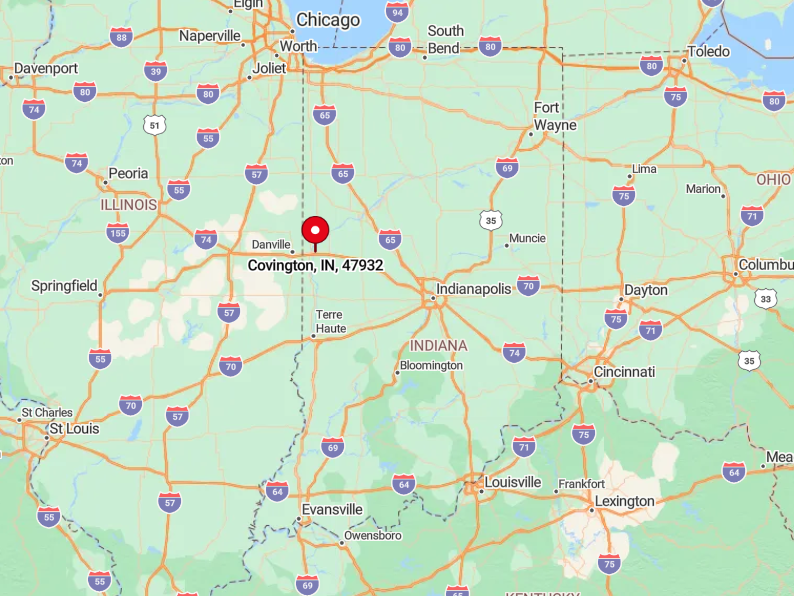
Covington rests just south of I-74 in western Fountain County, roughly midway between Danville, Illinois, and Crawfordsville, Indiana. The Wabash River skirts the town’s north edge, and remnants of the canal curve between the river and downtown like a shallow oxbow.
Interstate access makes it the most convenient canal town for travelers coming from Chicago or Champaign. Once you exit, follow Canal Street east; the golf-course basin appears almost immediately on your left.
10. Rochester
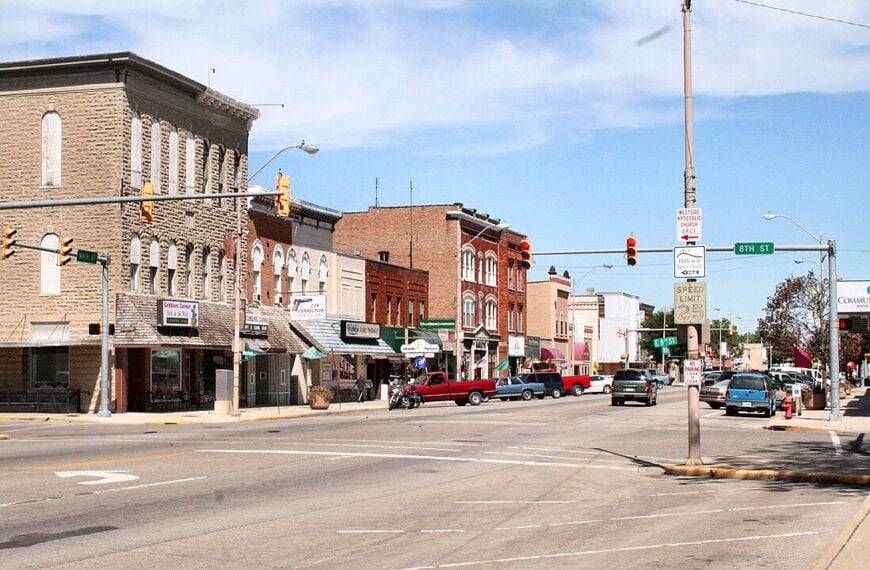
Rochester didn’t sit directly on the main Wabash & Erie Canal, yet it thrived as a feeder-port thanks to nearby Lake Manitou, whose spring-fed waters ensured a constant supply to the canal’s summit level.
Today, you can rent a kayak from the city park and paddle across sparkling blue water before walking two blocks to the Fulton County Museum, where an original canal surveying chain and mule harness are proudly displayed.
I like grabbing coffee at Streamliner Depot Café, a converted 1920s rail station whose owner keeps a small exhibit on how the town’s grain elevators once loaded canal boats.
The lesser-known gem here is the “Indian Pipes” nature trail offering glimpses of rare ghost-white flowers in late summer, growing in the same damp soil that once kept the canal watered.
Rochester seamlessly mixes lake recreation with canal lore, delivering a refreshing twist on heritage tourism. The average price for a 3-4 bedroom home in Rochester falls between $113,000 and $197,000, making it an affordable option for families seeking history on the Wabash River.
Where is Rochester?

The town anchors Fulton County at the junction of US-31 and IN-14, about forty-five minutes south of South Bend. Lake Manitou forms the eastern boundary, while the faint line of the feeder canal can still be traced west of Main Street.
Driving is easiest, but cyclists often tackle the Nickel Plate Trail, which links Rochester to Peru along a converted rail corridor paralleling portions of the old canal ditch. Regional buses from Plymouth stop here twice daily, dropping riders two blocks from the museum.
9. Logansport

Known as the “City of Bridges,” Logansport grew where the Eel River meets the Wabash, and its twin rivers required a series of intricate canal aqueducts that engineers once dubbed their greatest Hoosier headache.
I’m captivated by Spencer Park’s preserved culvert stones—massive blocks that once supported those aqueducts and now double as picnic seating beneath sycamores.
The Dentzel Carousel, built in 1900 and still operating, stands on land originally dredged for canal storage; riding its hand-carved tigers while an antique band organ plays is pure nostalgia.
Each August, “Canal Days at the Depot” fills Little Turtle Waterway Plaza with costumed reenactors who demonstrate rope-making, barrel-hooping, and the lost art of tow-line splicing.
If you crave modern thrills, rent a kayak from France Park and paddle downriver to the confluence, tracing a watery path parallel to the vanished canal. 3-4 bedroom homes in Logansport range from $130,000 to $355,000, providing a variety of choices for those drawn to its canal history and charming small-town feel.
Where is Logansport?

Logansport sits in Cass County, roughly halfway between Kokomo and South Bend, with US-24 and US-35 crossing downtown. The former canal right-of-way is easiest to spot along the Little Turtle Waterway Trail that hugs the Wabash’s north bank.
Amtrak service in Lafayette is an hour southwest, so I usually drive in on IN-25, which shadows the canal prism for several scenic miles. Parking is plentiful near the carousel, and bike rentals are available next door for those eager to explore the towpath trail.
8. Peru
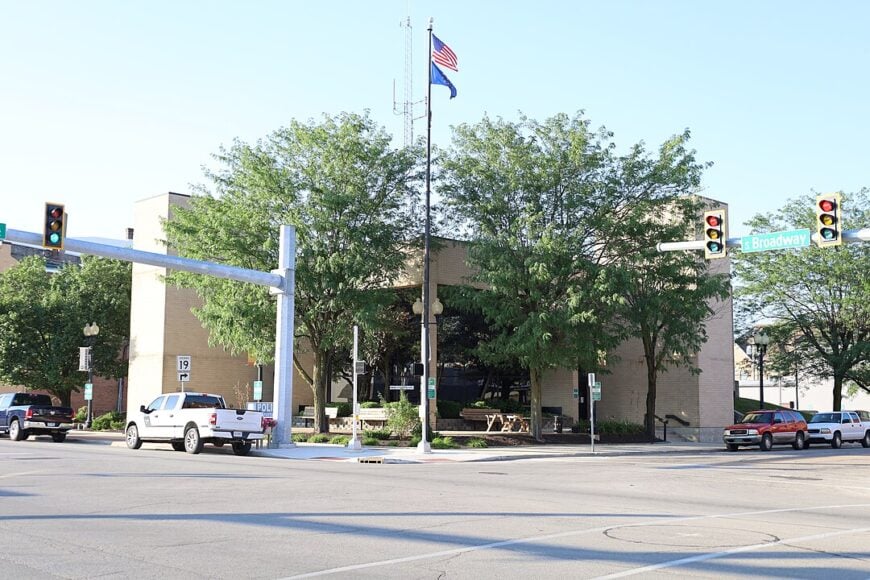
Peru wears two historic hats: “canal town” and “Circus Capital of the World,” a dual identity that makes every block feel like a page from a very colorful scrapbook. The Circus City Museum features a scale model of downtown circa 1885, complete with miniature canal boats unloading lion cages bound for winter training quarters.
I never miss a stroll down Canal Street, where faded advertisements for feed companies still cling to brick walls, marking former warehouses that once rang with roustabout chatter.
Grab a pastry at Aroma Coffee—they revive a nineteenth-century recipe for canal-boat gingerbread spiced with blackstrap molasses. On warm evenings, locals launch lantern-lit paddleboards on the Wabash, creating a dreamy reflection of both circus banners and canal heritage on the water’s surface.
In Peru, 3-4 bedroom homes are priced between $137,000 and $150,000, offering an affordable option for families who appreciate its connection to the Wabash and Erie Canal.
Where is Peru?
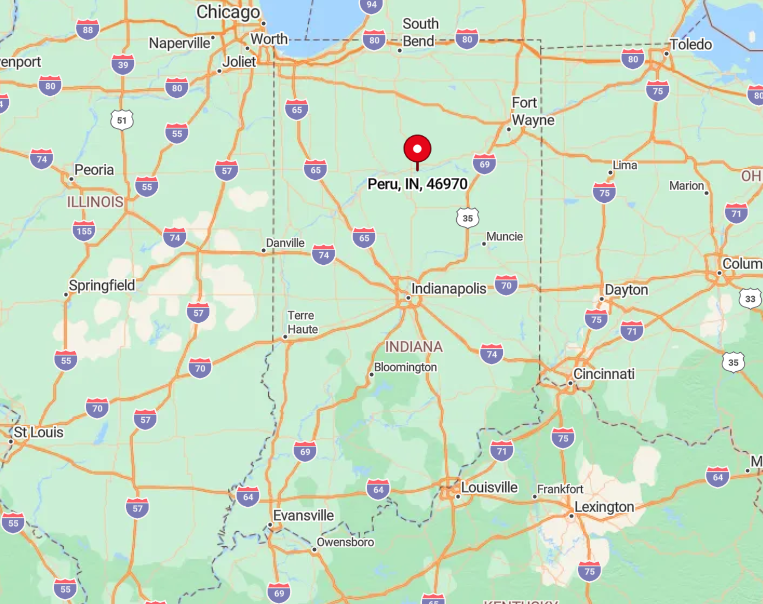
Peru lies in Miami County at the junction of US-24 and US-31, thirty miles north of Kokomo. The old canal ditch parallels the Wabash River on the town’s south side, partially filled but still visible from West Canal Street.
If you’re traveling by bike, hop on the Nickel Plate Trail, which runs thirteen flat miles to Rochester, shadowing the former canal feeder for part of its route. Indianapolis International Airport is ninety minutes south, and rental cars make the straight shot up US-31 a breeze.
7. Wabash

Wabash claims fame as the world’s first electrically lit city, yet its earlier fortune rode in on canal boats that turned Main Street into a commercial hotspot long before Edison’s bulbs glowed.
I like to start at the Wabash County Historical Museum, whose interactive “Build a Lock” station lets visitors stack wooden block gates and flood water through them. Downtown’s Eagles Theatre, recently restored, sits on piles driven into the canal embankment—a quirky fact that explains its unusually deep basement.
If you hike the Charley Creek Gardens just west of downtown, you’ll cross a small stone culvert that once carried the canal under a farm lane, now sprouting irises and daylilies instead of mule prints.
Wabash effortlessly fuses high-tech lore with canal roots, making every walking tour an unexpected blend of gaslights and towpaths. The price for 3-4 bedroom homes in Wabash typically falls between $167,000 and $193,000, offering a charming and budget-friendly option for those interested in canal-side living.
Where is Wabash?
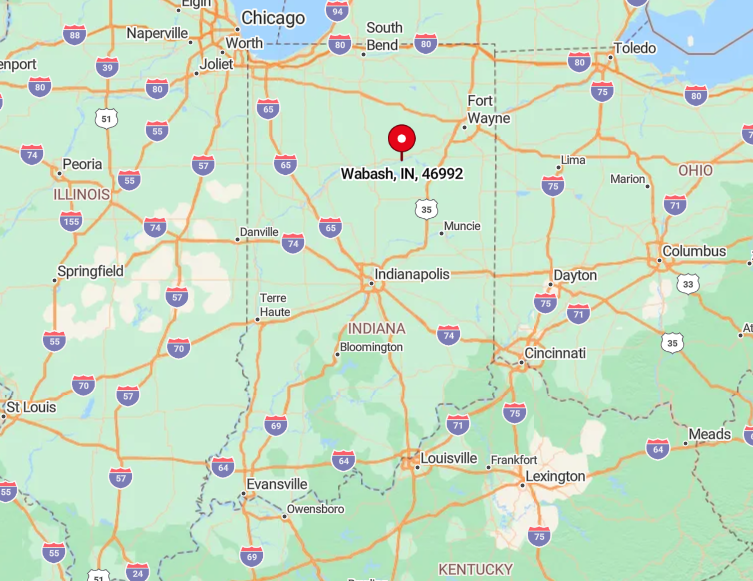
Set in Wabash County, the city lies on IN-15 halfway between Fort Wayne and Marion, hugging the north bank of the Wabash River. Portions of the canal prism remain visible behind Paradise Spring Historic Park, where interpretive panels connect dots between treaties, boats, and early industry.
Reaching Wabash by car is straightforward via US-24; buses from Fort Wayne also stop twice daily at the downtown depot. Once in town, free trolley service loops key canal sites every hour on Saturdays from May through October.
6. Huntington

Huntington’s waterfront bustled in the 1840s with mills that tapped canal flow to grind grain round-the-clock, and you can still see the original millstones at the Huntington County Museum.
I’m a big fan of the Sunken Gardens, a former limestone quarry now blooming with koi ponds and footbridges; interpretive signs reveal it began as a canal stone supplier.
Evening brings live music to Jefferson Street’s sidewalk cafés, many of which feature “Canal Burger” specials topped with locally sourced ham, a nod to nineteenth-century pork-packing.
Huntington strikes an appealing balance between preserved history and modern small-town energy. 3-4 bedroom homes in Huntington are priced between $215,000 and $220,000, making it an appealing choice for families seeking both history and modern amenities.
Where is Huntington?

The city sits along US-24 in Huntington County, twenty-five miles southwest of Fort Wayne. The canal corridor runs parallel to Jefferson Street before merging into the Wabash River just west of downtown.
You can access the town easily by car or via the Wabash River Trail, a crushed-limestone path popular with cyclists. Regional rail service no longer stops here, but the Fort Wayne airport provides rental cars that reach Huntington in under thirty minutes.
5. Fort Wayne

Fort Wayne was the grand crossing where the Wabash & Erie met the short-lived Miami & Erie, effectively linking Lake Erie to the Ohio River and turning the city into a nineteenth-century logistics powerhouse.
The beautifully restored replica canal boat “Sweet Breeze” now offers guided cruises along the St. Marys River, and I never tire of hearing the captain explain how these modern waters overlay the old channel.
Promenade Park’s striking arch footbridge sits exactly where canal boats once lined up to pay tolls, and its interactive water tables let kids steer toy vessels through miniature locks.
Top off the day at The Deck riverside bar, where the drink menu includes a crisp “Towpath IPA” brewed just for canal enthusiasts. The average price for a 3-4 bedroom home in Fort Wayne ranges from $250,000 to $273,000, offering a great balance of affordability and access to the canal system.
Where is Fort Wayne?
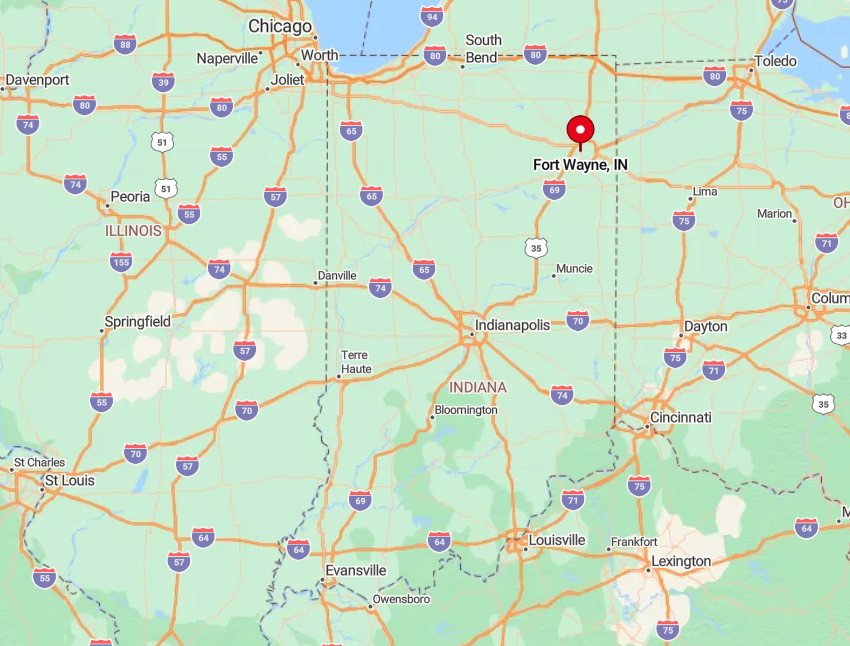
Northeastern Indiana’s largest city anchors Allen County at the confluence of the St. Marys, St. Joseph, and Maumee Rivers. I-69, US-30, and US-24 all funnel drivers directly downtown within minutes of the canal attractions.
The Rivergreenway Trail traces much of the former canal bed, so it’s easy to rent a bike and explore on two wheels. Fort Wayne International Airport lies eight miles southwest, with ride-share pickup bringing visitors to Promenade Park in about fifteen minutes.
4. Lagro

Lagro may be tiny, but walking its brick sidewalks feels like stepping onto a 1850s daguerreotype, complete with a preserved feed mill that once echoed with canal commerce.I always pop into Cooper’s Old Time General Store, where the owner displays shards of canal-boat pottery found while gardening behind the shop.
Across the street, St. Patrick’s Catholic Church crowns a hilltop and offers a panoramic view of the Wabash River valley, perfectly framing the route boats once traveled. Lagro’s riverfront park includes a picnic shelter fashioned from canal lock timbers, their axe-hewn faces still bearing the marks of Irish immigrant laborers.
Summer evenings bring free bluegrass concerts that spill fiddle tunes across the towpath, creating one of the most atmospheric small-town experiences along the canal.
3-4 bedroom homes in Lagro are typically priced between $143,000 and $220,000, providing an affordable choice for those interested in the area’s rich canal heritage.
Where is Lagro?

You’ll find Lagro five miles east of Wabash on US-24, perched at the spot where the Salamonie River meets the Wabash. The canal’s stone lock remains visible just south of Main Street, making this one of the best-preserved engineering sites on the route.
There’s no public transit, so a car is essential; I usually park at the trailhead for the Wabash River Trail and explore town on foot. If you’re cycling, the asphalt path from Wabash to Lagro offers a scenic, mostly flat ride that mirrors the canal corridor.
3. Americus

Americus never grew large, yet it guarded one of the canal’s most photogenic structures: the Deer Creek Aqueduct, whose cut-limestone arches still carry a trickle of water across a rugged ravine.
I like to hike down beneath the span, where you can touch original stones carved with the masons’ initials, a hidden detail most visitors miss unless they crawl through the underbrush.
The hamlet’s tiny St. John’s Church hosts an annual “Aqueduct Day” bake sale featuring pawpaw bread and canal-boat stew served in enamel mugs. At dusk, families light floating candles in Deer Creek, creating a constellation that drifts beneath the aqueduct and makes you forget the twenty-first century entirely.
The average price for a 3-4 bedroom home in Americus ranges from $53,000 to $200,000, making it one of the more affordable options in this historically rich region.
Where is Americus?

This unincorporated community sits ten miles north of Lafayette in Tippecanoe County along IN-25. The canal bed and aqueduct lie just west of the highway, accessible by a short gravel road marked “Private—Canal Access Welcome,” a local courtesy sign I adore.
If you’re driving from Indianapolis, allow ninety minutes on I-65 before cutting east at the Dayton exit. There’s no gas station in Americus, so fuel up beforehand and pack bug spray for the creek bottom.
2. Lafayette

Lafayette transformed from a modest ferry crossing to a bustling trade hub when the canal arrived in 1843, and its downtown still showcases warehouses that once stored pork, grain, and even pearls harvested from the Wabash.
The Wabash Heritage Trail, my favorite urban hike in Indiana, winds past a reconstructed blockhouse and slips beneath the Myers Pedestrian Bridge—a structure built on pilings originally driven for a canal dock.
Grab lunch at Revolution Barbecue, where a floor-to-ceiling mural depicts a colorful packet-boat captain guiding hogs to market.
If you’re visiting in September, the Feast of the Hunters’ Moon reenactment sprawls across Fort Ouiatenon’s riverside grounds, and a special canal-era encampment demonstrates rope-twisting and shingle-cutting techniques.
Lafayette feels both scholarly (thanks to nearby Purdue) and down-home, giving canal aficionados plenty of reasons to linger. 3-4 bedroom homes in Lafayette range from $266,000 to $305,000, offering a higher-end option for those wanting to live near both history and modern amenities.
Where is Lafayette?

The city straddles the Wabash River in Tippecanoe County, right off I-65 about an hour north of Indianapolis. While the canal itself is long gone, its former course intersects South Street, now lined with brewpubs and antique shops.
Amtrak’s Cardinal line stops downtown three times a week, an easy option if you’d rather arrive by rail just as early travelers did. CityBus Route 1 follows Canal Road, letting you hop on and off near interpretive plaques without moving your car.
1. Delphi: Preserving Canal History at Wabash & Erie Canal Park

Delphi tops my list because it offers the most immersive canal experience anywhere in Indiana; the Wabash & Erie Canal Park contains three restored locks, a working gristmill powered by canal water, and the 55-foot replica boat “The Delphi” that glides silently along a re-watered mile of channel.
I love starting at the interactive Interpretive Center, where hologram “lock tenders” explain how they managed water levels, then stepping outside to try my hand at opening an actual wooden gate under a ranger’s supervision.
The adjacent Pioneer Village hosts costumed artisans who spin wool, dip candles, and forge iron trivets—all trades that once thrived beside the canal.
Trails loop through floodplain forest rich with wildflowers, and in April I’ve spotted bald eagles perched atop cottonwoods that sprouted from abandoned canal berms. The gift shop sells flour ground on-site, a perfect edible souvenir that links modern kitchens with nineteenth-century technology.
Delphi proves that canal history isn’t just something you read about—it’s something you can ride, taste, and feel under your fingertips. The price for 3-4 bedroom homes in Delphi typically falls between $239,000 and $300,000, reflecting the area’s blend of historic charm and scenic canal views.
Where is Delphi?
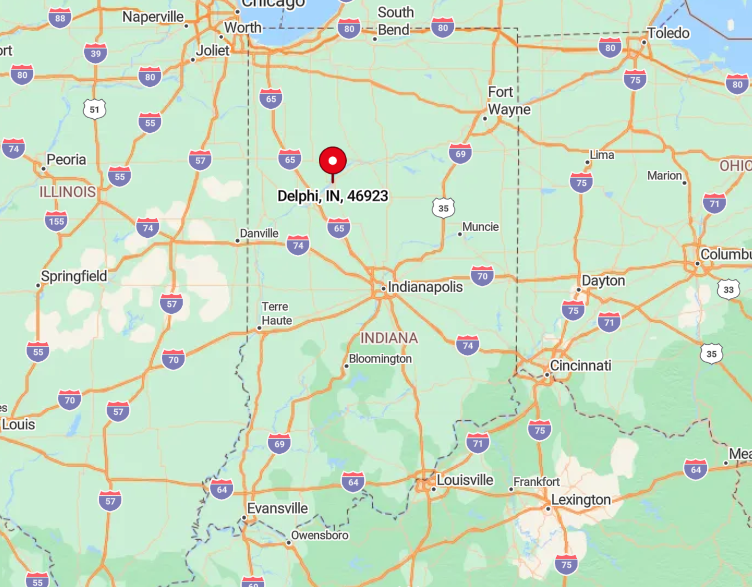
Delphi lies in Carroll County, fifteen miles northeast of Lafayette and a quick detour off IN-25. The canal park sits on the town’s north edge, bordered by Bicycle Bridge Road and Washington Street, with ample parking for RVs and tour buses.
If you’re traveling the Wabash River Scenic Byway, clear signage points directly to the park’s entrance, and towpath trails link to a broader network of county greenways.
Getting here is easiest by car, though cyclists often roll in from Logansport via the ten-mile, crushed-stone Delphi Historic Trails corridor that closely follows the original canal bed.






